Podcast: Play in new window | Download
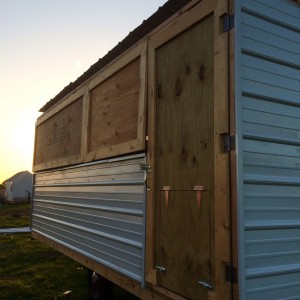
Here is a shot of the semi-finished wagon. Notice my chicken door with-in the person door. That is one of the improvements I’m most excited about.
In just over five years of farming I have now built four variations of a chicken wagon and each one improved on the failures of the ones that came before. Of course it didn’t take much to improve on my first wagon which was built out of a great find from a machinery auction. On today’s episode I wanted to take some time to talk about the design for this chicken wagon and why I decided to build it the way that I did. Below you will find a series of pictures showing my chicken wagon build at various stages along the way.
Here are some helpful links from today’s show …
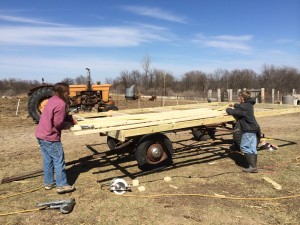
We laid out the floor with our 2×4 joists and then placed the 3/4″ treated plywood on for the floor.
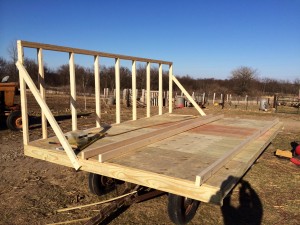
The walls were built with studs 2′ on center. I actually attached my steel horizontal instead of vertical like it normally would be so I had less cutting to do.

One of the best things about this wagon was that I borrowed an air nailer from a friend. That made the framing process much faster!
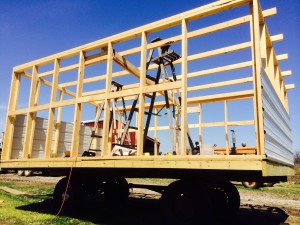
An important thing to work on as you are framing the building is trying to keep everything square. That doesn’t happen often on my farm, but that’s why I always say “it’s good enough for who it’s for.”
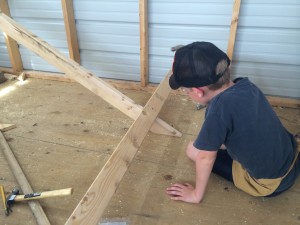
Here my son is working on the frame of our hinged roost, this will be great for when he needs to clean it out 😉
As always, I want to thank you so much for listening and supporting the show with your encouragement and reviews on iTunes! I am continually working to produce a better show, and I’m thankful for all of the listeners sticking with me as I learn.
If you do enjoy the show, don’t forget that you can subscribe on iTunes and leave a five star rating and review (by clicking the link). If you are an Android phone user you can also subscribe on the free Stitcher App. It is so very encouraging to know that people are listening and enjoying the show!
I would love to hear your questions, show ideas, or comments about the show. Feel free to shoot me an e-mail! As always you can follow along with “The Beginning Farmer” and Crooked Gap Farm by checking out these links …

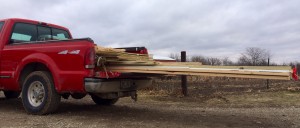

I’ve never built a chicken wagon, but I have a little experience with the running gear.
I had an old hay wagon of my grandfather’s that was built on a John Deere running gear. It had a 8×14 bed, but the wheelbase was only about 9-10 ft, which made it kind of unstable, and too short for the header trailer I needed to build.
It might not be obvious at first, but once you take off the floor you can lengthen the running gear by replacing the pipe running between the the front and rear axles (I’m not sure if every running gear is like this, but most of the ones I’ve seen are built this way).
I was able to stretch my running gear to 18′ between the wheels by bolting in a longer piece of pipe, and it would have been possible to stretch it even more if desired. If I had been planning to build a chicken trailer, I think I would have also went to the trouble of stretching the wheelbase out so that the trailer would be a little bit more stable.
Besides all that, I think expanded metal would make a better floor than cattle panels covered with chicken wire. In the winter, you can stop drafts by cleaning it out and covering the floor with a layer of plywood, a thick layer of bedding, a layer of cardboard covered with bedding, etc.
If you are looking for ideas, I think that if I built one I would try to figure out some sort of wide “trapdoor” in the floor or in the wall to make it easier to clean out (it should be less work and less dusty to push the bedding out of a trapdoor instead of shoveling it out of the door, etc.).